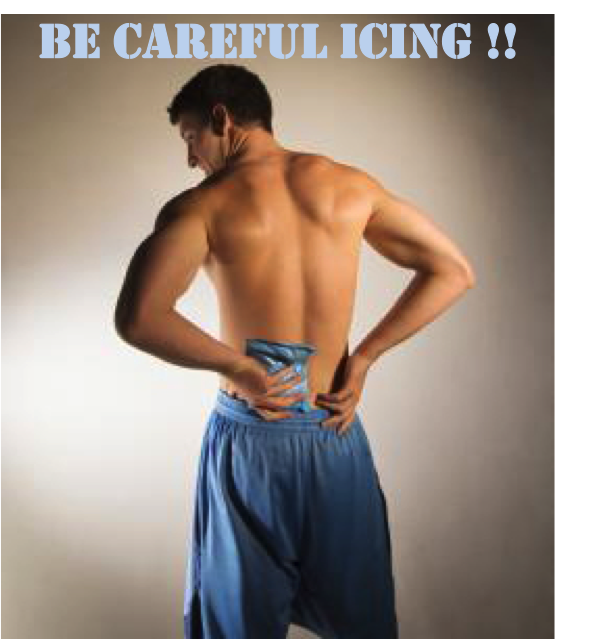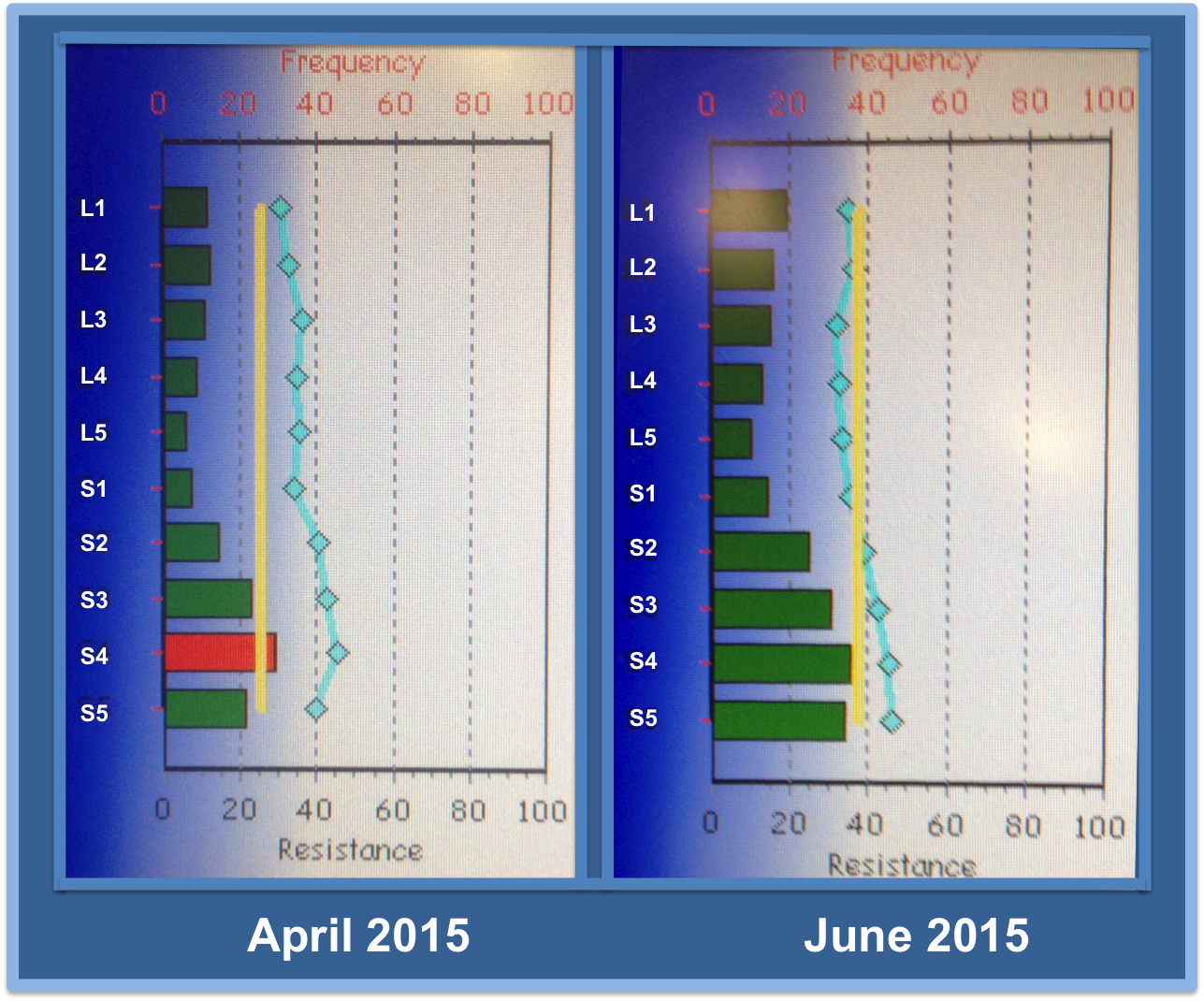
Seriously. I got frostbite in the middle of summer on our annual family fishing trip. A sunny, 85-degree day. No wind. How is that possible, you may ask?
It happened from…. ICING MY BACK!
Yes, icing my back.
Man. Talk about kicking someone when they are down. I am already nursing a lower back disc herniation, disc bulges and spine degeneration as well as a recently diagnosed inguinal hernia. I have been religiously icing my lower back 5+ times a day for 5+ months, without issue, since the disc herniation surfaced. I have been unable to workout to the extent and intensity (and, “RAGE”) that drives my competitive spirit and lifestyle. Fortunately I found the Ultimate Reset to get back on track! Further, the disc herniation has contributed to painful, radiating sciatic pain down my left hip, leg and foot. Come on, give me a break!
Yes, I know it can always be worse. Why not add a curious case of summer frostbite to the list?
It happened. Seriously.
I can only laugh now, ha. But, to be honest, it was a stressful experience as I tried to uncover what was actually going on.
The morning started like most mornings on the fishing trip. As I was having breakfast early in the morning and preparing essentials for the day on the water, I was also icing my back. Just like I had done for 5+ months. My lower back was a little sore, especially with the demands on my spine from being in a boat all week taking on waves at high speed, with a lot of rocking back and forth while fishing. The boat is like a very large balance board, which requires stabilizing muscles in the back and core to continuously fire. A great workout for recovery really, but can lead to some soreness!
What the ice pack is so effective at is reducing inflammation and shuttling essential nutrients and blood to the region once the pack is removed and the iced area warms up. This is especially true for traumatic lower back pain. Some people have preference for heat vs. cold therapy, or combination of the two. For me, I believe cold has helped with my disc herniation.
Shuttling nutrients to muscles is crucial for recovery for this type of lower back pain. Growing up playing competitive sports and activities my entire life, I have been no stranger to icing my injuries and soreness. Never had an issue. Until now, be careful…
After icing for my typical 15 minutes that morning I started to feel a tingling sensation in my lower back. Tingling and some numbness are not uncommon from icing, but this felt different. Anyway, I removed the ice pack and didn’t think much of it. During the course of the day I started to feel itchy and a burning sensation in my lower back. Mid-day I decided to pull up my shirt and take a look in the mirror. I was shocked. This is what I saw on just one part of my back.

I then had my wife take a look at both sides and it was throughout my lower back and beneath where the ice pack was tucked into my shorts. Woah. I was a bit concerned that I was bit by something in the wilderness and starting to get worried. I then recalled the experience I had with the ice pack in the morning, did some online research when I was in range of Wi-Fi access and found that these are the typical markings for frostbite and ice burn.
So why did this happen to me for the first time in MANY years of icing and what is the best course moving forward?
Have you ever noticed that freezers have settings to control the actual temperature in the freezer? At least most freezers have that option. Well it turns out that the freezer in the cabin at the lake was set WAY colder than normal. We all noticed it earlier in the week and attributed it to their amazing collection of frozen mugs in the freezer for the ultimate beer experience!
So, number one reason for the frostbite was that the ice pack was SUPER cold. Since I am a science guy I checked the ingredients list on the MSDS to see if I noticed from my chemistry background a glycol component or otherwise to see if that could have dropped the temperature in the pack even more than normal. This is what I found…
The “Mixture” of 5-40% by weight “Non-hazardous Ingredients” is a bit vague so I do not know for certain or even care to research any further. Oh well, it was a good, scientific thought. Ha. The ice pack may or may not have been too cold to apply in the first place.
The second reason for the frostbite was that I had the ice pack directly against my skin that morning. Usually I have several layers of shirt or towel between the ice pack and my body, but for some reason I didn’t do it that morning. I think because I was icing while getting ready for the day vs. laying down. The reusable cold compress pack I have has the ingredients enclosed in a pouch made out of polyester/vinyl. The pack is marketed that you can place directly on skin, and I have before many times. With that said, as mentioned above the ice pack was INSANE cold and direct skin contact was not a good move. I guess I learned the hard way!
So what is frostbite and why does it look like a burn and not black dead skin like the typical “frostbite”?
Well the good news is I removed the ice pack when I felt the unusual tingling sensation or I may have had a much different ending to this story. What happens is that the cold contact on the skin for extended periods causes a significant drop in temperature and the cells freeze, forming sharp ice crystals and damaging the surrounding cell structure. The fact that the infected area was soft (not hard), red (not white), burn/tingle sensation (not numb) likely indicated that I did not sustain permanent damage. Phew. As such, I did not need to seek immediate medical attention and was able to treat myself.
So how did I treat?
The first step was to make sure that the infected area was warmed. Re-establishing a normal body temperature must be a gradual process to avoid burning yourself and causing more damage. Fortunately, the area was already back to normal body temperature before I diagnosed the issue. Regardless, I had a shower anyway. The National Institute of Health recommends 104 – 108 degrees for 20 minutes. It is important not to move or massage the damaged areas, as this can cause subcutaneous ice crystals in the tissue to move and do further damage. Good to know.
I then treated the area with aloe vera we had in our medical kit and moved on with my day (honey can work as well). I have been treating with aloe vera several times daily since. The good news is I had significant improvement overnight and the area was almost completely healed in a week. I still have some minor redness in some areas, but hopefully this resolves in the coming days and weeks. Lesson learned!
In positive news, my lower back injury is definitely improving. Besides a general feeling of improvement with less frequent back soreness and sciatic pain, the Pro Adjuster data indicates that my lower back is becoming more functional. See the 3-month improvement below! Green bars with higher magnitude and intensity are generally good (red = bad).

Finally, despite the challenges with getting frostbite in the middle of a summer heat wave, I am on track for recovery of my lower back injury and we still had an AMAZING trip enjoying the company and views!



Thank you for posting this. I just did the same thing. I work from home and put an ice pack on my back awhile sitting in my office chair. I have that same red patch. I just put on the Aloe Vera.
You are welcome, Lori! I hope you are feeling better today. It can be painful I know. Have a great day!!
Happened to me today. Smh
Sorry to hear, Michelle. Very painful. Hope you are feeling better!
My daughter added a lot of salt to my ice bag for my knee, apparently making it even colder. An hour later I noticed a hard raised skin rash (looking like your photo) that was tender to the touch, and I kind of freaked out. Seriously mid- summer knee injury followed by frost bite. Nice to know I’m not alone I guess! Thanks for the info.
Sorry to hear that happened. I know how you feel! Hopefully you are feeling better now and having a great summer. Thanks for checking out my website!